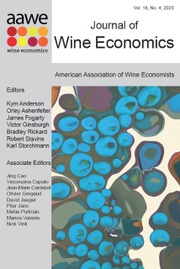For those who are members of GuildSomm, or regularly watch SommTV, Kelli White is likely a familiar name. A former sommelier at renowned establishments such as New York's Veritas and Napa Valley's PRESS, White currently serves as the Director of Education at the Wine Center at the Meadowood resort in the Napa Valley. She is the author of Napa Valley, Then & Now, a rich work covering hundreds of Napa's producers. But it is her down to earth and relatable persona which she brings to expressing her passion, that makes her an excellent guide for those seeking to step into the world of wine.
In Kelli White's own words, Wine Confidence is about “help[ing] more people unlock their passion for wine, to deepen their understanding and to increase their confidence.” From the start, White lets the reader know that the book is not going to be a research manual “detail[ing] the hundreds of grape varieties and wine regions found around the world. Those seeking that level of information will have to look elsewhere.” Instead, White offers an accessible, introductory-level exploration of wine, but one engaging enough for more experienced enthusiasts because of her personal insights and expertise.
Throughout the book, she provides practical, easily digestible advice. For instance, when faced with a bottle sealed with a wax cap, White simply recommends to “proceed as if the wax is not there.” I remember the first time I tried to scrape the wax off the top of a bottle—a total mess! When faced with the frustrating situation of a broken cork, White simply suggests to “push the remainder of the cork into the bottle and pour the wine into a decanter.” White also shares the classic sommelier trope, “what grows together goes together.” While some of the tips will be obvious to seasoned wine drinkers, many of her insights are far more helpful than learning them the hard way.
Even for those with significant experience in the world of wine, White introduces terms and concepts that are new and enlightening. For example, I had never encountered the phrase “slow ox,” but it is a practice I regularly employ. “Slow ox” is the opening of a bottle and letting it stand for several hours without decanting. She says it is often used for old Barolo—it is definitely the strategy I use for big Italian wines. White also explores whole cluster fermentation, explaining how stems not only contribute to tannins and flavors but can also absorb a small amount of alcohol—something I was unaware of previously.
Throughout the book, White offers thoughtful reflections on the wine industry. Although she thinks professional wine critics are important and more reliable that social media ratings, she acknowledges that she uses crowd sourced ratings to glean “real-time insight into how an older bottle is drinking today.” Although not explicitly mentioned, I suspect she is referring to CellarTracker, which I too utilize for the same purpose. In another instance, White navigates the often-controversial topic of natural wine, expressing admiration for the movement while also admitting, “I sometimes struggle to enjoy the edgier examples.” To put it simply, while she values the spirit of the natural wine movement, she is less enthusiastic about some of its more extreme manifestations—what I might derisively label “natty.”
Some readers will appreciate the section of the book addressing the differences between a sommelier, a Master Sommelier (MS) and a Master of Wine (MW). As someone who recently passed the WSET (Wine and Spirit Education Trust) Diploma, I've encountered the question, “Does this mean you can be a sommelier now?” The confusion surrounding wine certification and professional titles is common, and White clears up many misconceptions. For the record, a sommelier is a job, while MS and MW represent the pinnacle of certification from The Court of Master Sommeliers and The Institute of Master of Wines, respectively. Being a wine expert doesn't make you a sommelier, and not all sommeliers need or have certifications.
The central theme of Wine Confidence is empowering readers to navigate wine-related situations with confidence, especially in the context of business. As White states, “wine is the new golf.” Being able to select a bottle of wine that is both excellent and within budget is a valuable skill which can make a lasting impression in business settings. The first time one is handed a wine list and anointed to make the choice can be quite intimidating, especially if one lacks the knowledge and confidence to make an informed decision. White effectively argues that anyone who may find themselves holding a wine list at a business dinner in the future should read her book.
While many books from the Académie du Vin Library are regional or producer specific, White's Wine Confident is an accessible introductory-level book that can make a great gift to a friend who is just starting their wine journey, or a junior colleague hosting clients, who needs some wine knowledge and confidence to properly navigate dinners.


